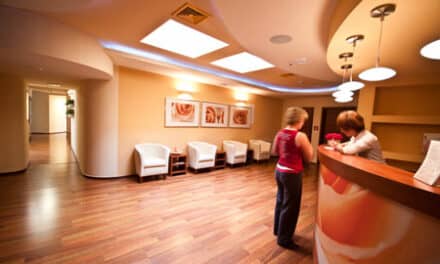With more adults working from home, the orthodontic practice’s schedule needs to adapt to take advantage of and accommodate their greater flexibility
by Roger P. Levin, DDS
Orthodontics is a business that has been relatively stable in terms of general operations. For example, practice success depends heavily on a steady stream of referrals. Practice operations depend on the quality and experience of the orthodontic team. Clinical results depend on the clinical treatment and patient compliance. Having a stable business model is highly desirable, but orthodontics is poised to undergo some changes and every practice should be aware and prepared. These are not necessarily negative changes, as much as alterations or modifications that will need to be made to continue to enjoy a high level of orthodontic practice success.
A New Trend in Scheduling
The COVID-19 pandemic has changed the working style of many people throughout the world. And although the future is still uncertain, there is no question that more people will continue to work from home, more than ever before. As people begin to realize that they can work highly effectively from home, eliminate long commutes, provide or supervise daycare for their children, and work in casual or even less than casual clothing, they won’t ever want to go back to the office. Businesses will also recognize the benefits of having remote workers and begin to downsize the amount of real estate they’re willing to pay for. Some companies will even make working from home mandatory, have complete departments working remotely, or split days in or out of the office.
What does this mean for the orthodontic practice? It means that orthodontic schedules must be continually reevaluated. The traditional scheduling with massive numbers of children coming in the afternoon may be altered by parents who have more flexibility in their schedules because they work from home, have kids who have different school schedules, and want more convenient hours.
How to Prepare
What should an orthodontic practice do to prepare for this change and others? There are many considerations. One would be to have all new patients scheduled within 7 days so that your orthodontic practice is the first practice that they visit. This will help increase close rates and starts on new patients. New patients are the lifeblood and future success of the practice. Another example would be determining the proper interval between patients receiving different types of orthodontic treatment and ensuring that those appointments are available and spread out through the schedule. Crunch times will still exist, but not necessarily at the same level of intensity that we have seen in the past due to the increasing flexibility families have. Prior to COVID-19 most children came in the afternoon so that they didn’t miss school and their parents could leave work late in the day, bring them to the orthodontist, and then go home from there. Now many of them will already be home.
You must also keep in mind that scheduling is a mathematical activity. The number of new patients, active patients, and retainer patients, etc. should all be analyzed, and an ideal schedule constructed around those numbers. Practices may want to consider adding an extra hour on a certain day in the early morning or late afternoon, or having the office open one Saturday a month to accommodate new patient consults and catch up on other appointments. In whatever manner you choose to design your schedule, its effectiveness and efficiency will play a major role in determining your future success.
Schedules now will need to change as we see much more rapid shifts in circumstances for businesses and schools. And when your patients’ circumstances change, your schedule must change as well. OP
Roger P. Levin, DDS, is the CEO and founder of Levin Group, a leading practice management consulting firm that has worked with over 30,000 practices to increase production. A recognized expert on dental practice management and marketing, he has written 67 books and over 4,000 articles and regularly presents seminars in the U.S. and around the world. To contact Levin or to join the 40,000 dental professionals who receive his Practice Production Tip of the Day, visit levingroup.com or email [email protected].










